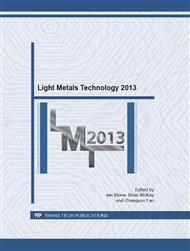p.746
p.751
p.756
p.761
p.766
p.771
p.776
p.783
p.788
Disbonding Technology for Adhesive Reversible Assembly in the Automotive Industry
Abstract:
Development of the automotive industry is currently driven by three fundamental considerations, i.e. environment, safety and cost, within a strong legislative framework. The reduction of material waste, production stages and weight have become key factors within this scope in the design of vehicles. Therefore, it is important to make greater use of non-conventional materials to take advantage of their recyclability, light weight and mechanical properties, for example new alloys and reinforced polymeric matrix composites (PMC). The dissimilar nature of the materials makes adhesive bonding the principal assembly technique for structural and semi-structural applications. Despite the enhanced performance and durability provided by the use of adhesives compared to that of more conventional joining technologies, bonded materials are very difficult to separate for recycling or reusing components at end of life. Currently, disassembly of adhesive bonded structures is conducted ineffectively by mechanical force, heat, and solvent or acid immersion. Previous research, to overcome these limitations has been mostly for applications other than automotive. Normally, reversible adhesive bonding is obtained through the development of engineered thermoplastic and/or thermosetting resins or incorporation of functional additives into commercial formulations. These technologies generally result in adhesive bonded joints with limited reliability, decreased adhesion strength and reduced resistance to higher temperature. Therefore, no effective disbonding technology has been developed for structural and semi-structural applications for the automotive industry. A comprehensive review will be presented on the adhesive disbonding technology which is currently or intended to be used by industry. This will highlight the advantages and limitations of the various techniques in order to develop an effective disbonding method for the next generation of vehicles at the end of life cycle (ELC).
Info:
Periodical:
Pages:
766-770
Citation:
Online since:
July 2013
Authors:
Keywords:
Price:
Сopyright:
© 2013 Trans Tech Publications Ltd. All Rights Reserved
Share:
Citation:


